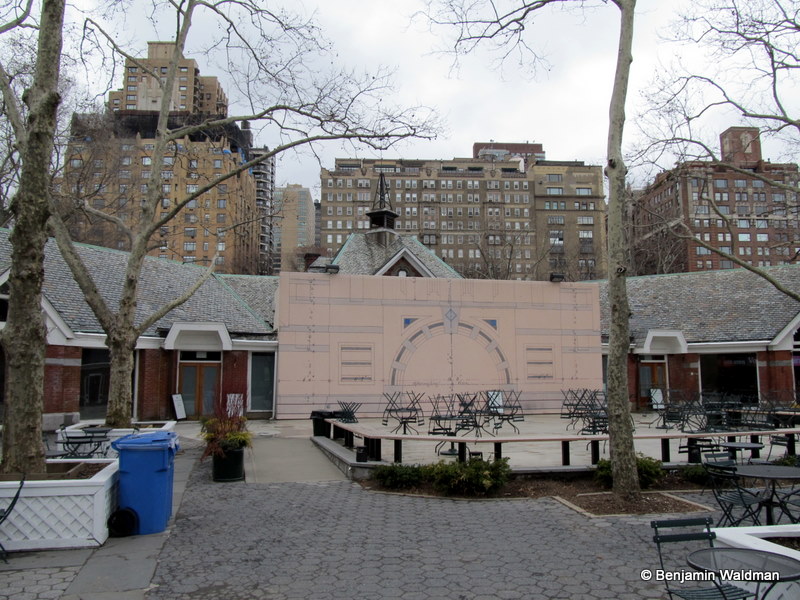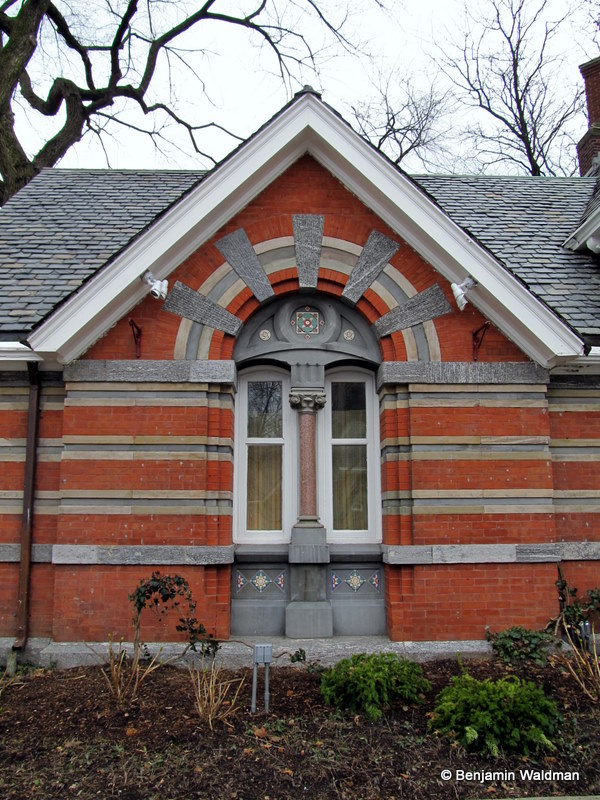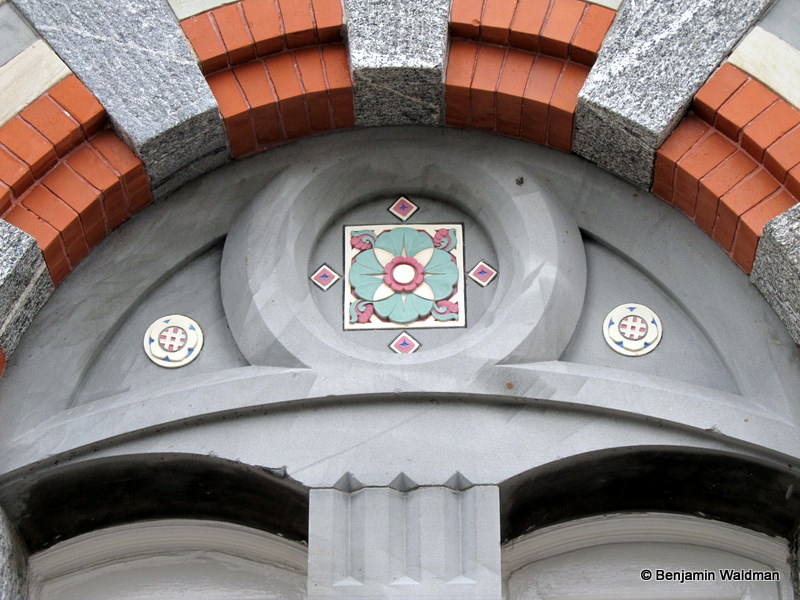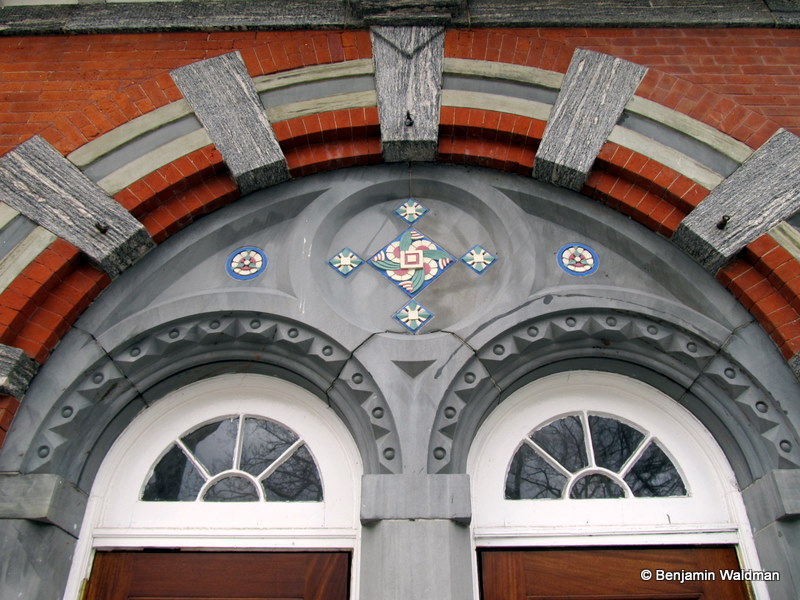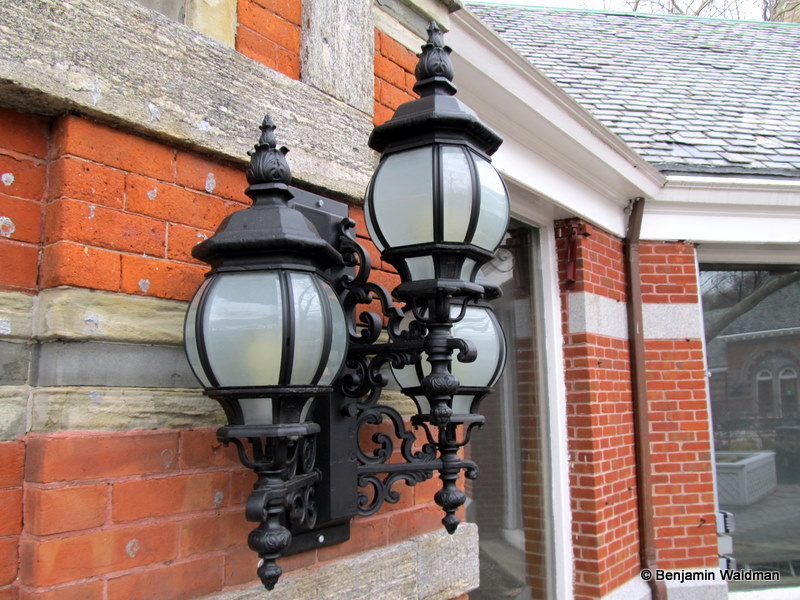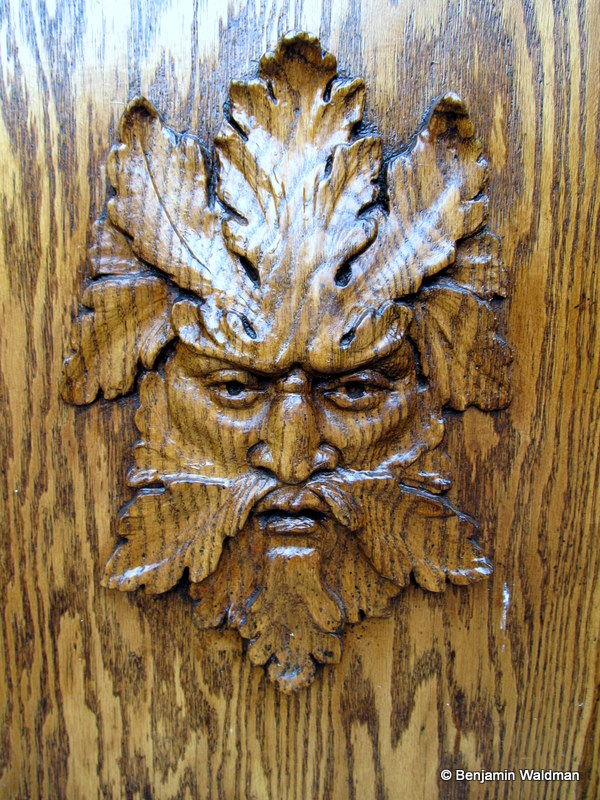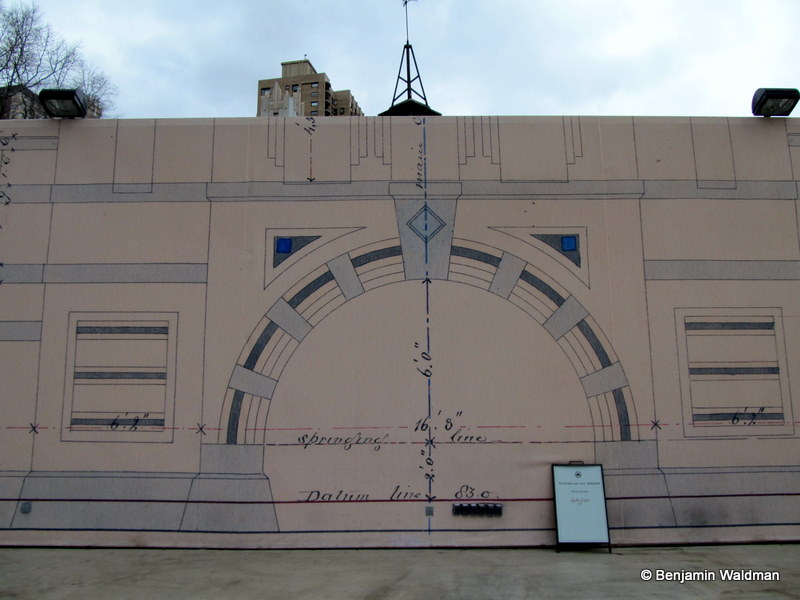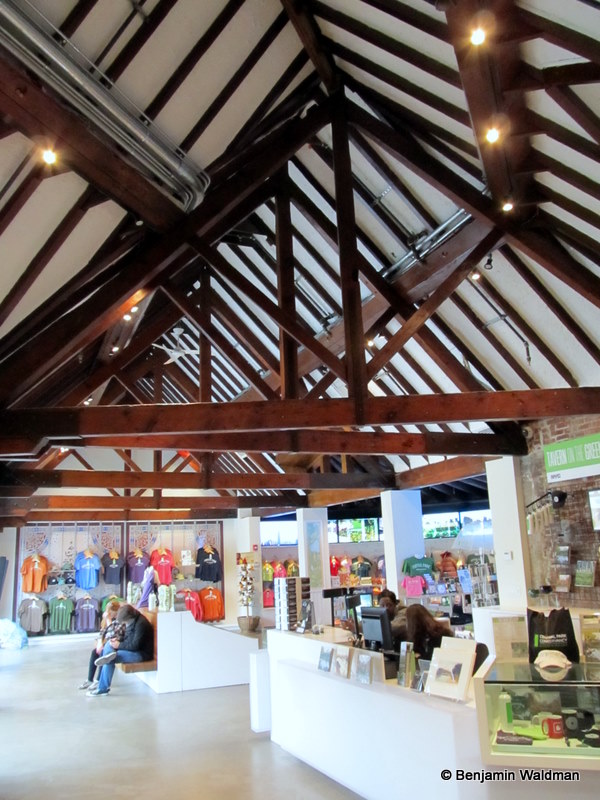The Sheepfold, better known as Tavern on the Green today, was constructed in 1870 and is one of the park’s exquisite nineteenth-century structures. In order to understand why a sheepfold was built in Central Park, and what one is, it is necessary to first explore the grassy area that abuts the building.
When Fredrick Law Olmstead and Calvert Vaux submitted their design for Central Park they were required to include a wide open space suitable for a parade ground. Parade grounds, which were common at the time, provided a space for militias to conduct drills. By the time the Olmstead and Vaux began implementing their design, after the Civil War, the popularity of parade grounds had begun to wane. As a result, they were able to convince the park commissioners to allow them to re-imagine the area.
The Sheep Meadow in the 1800s:
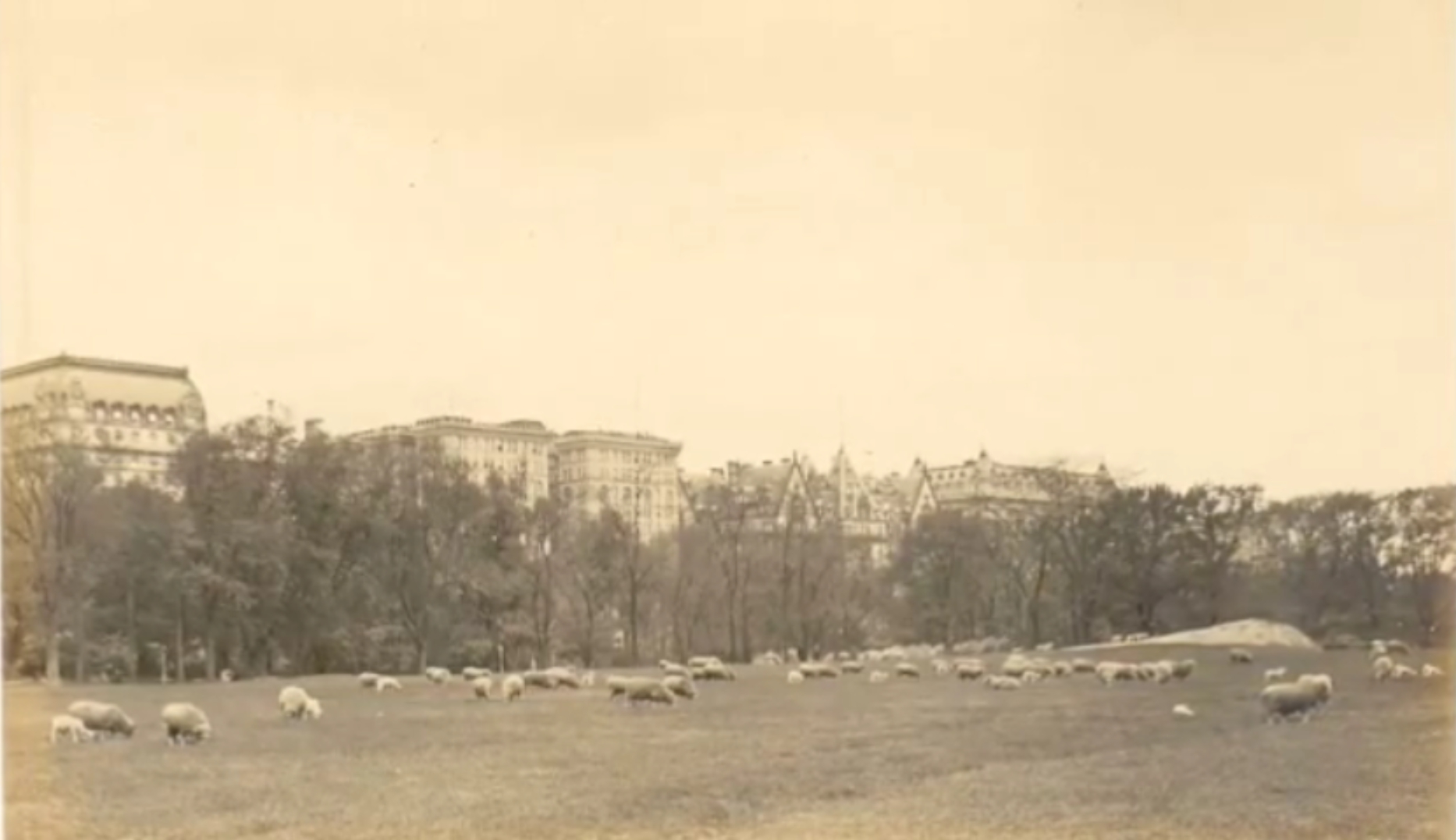 Detail of the Thaddeus Wilkerson photo postcard #53, ‘Sheep Fold, Central Park, New York’ (CENTRAL PARK and 59th St – 90th Street) via Wikimedia Commons
Detail of the Thaddeus Wilkerson photo postcard #53, ‘Sheep Fold, Central Park, New York’ (CENTRAL PARK and 59th St – 90th Street) via Wikimedia Commons
In 1864, 200 sheep were donated to Central Park and were allowed to graze on what became known as the Sheep Meadow. It was determined that the former parade ground would suit the sheep because of its pastoral qualities. At the time, it was the largest open space in the park and was unlevel. In order to care for the sheep, a shepherd was hired by the park.
The Sheep Meadow today:
In 1870, a building was designed to house the sheep and the shepherd. The building, designed by Jacob Wrey Mould and Calvert Vaux, housed the sheep in a barn setting and the shepherd and his family on the second floor. The ends of the building were used as a pavilion where children could learn about the sheep in an interactive environment. A sheep crossing was built across the road and twice a day the shepherd stopped traffic to ensure that the sheep crossed safely from the Sheep Meadow to the Sheepfold. Also, once a year the wool gathered from the sheep was auctioned off with the proceeds going to the city.
The facade contains whimsical and unique designs on around each window:
A detail from the main door:
The sheep remained in the park until 1934 when Robert Moses decided to reinvent the Sheepfold as a restaurant. The sheep were evicted to Prospect Park and Tavern on the Green was born. Moses’ decision was influenced by officials who were concerned that people were going to poach the sheep. Eventually, the sheep left the city and ended up in the Catskills. With the sheep out of the park Moses quickly converted their former home into a restaurant. On big change to the building involved moving the main entrance to the side of the building. The city recently placed a covering over where the original entrance was located, depicting its original design. It is unclear whether the city plans to restore the entrance.
In January 1956, Moses proposed expanding Tavern on the Green and enlarging its parking lot onto an adjacent playground, which was frequented by Upper West Side mothers and their children. This group of mothers publicly demonstrated against Moses and sought an injunction to stop him from building the parking lot. In July, with his reputation damaged, Moses abandoned his plans.
In 1974, Warner LeRoy took over the lease of Tavern on the Green and two years later renovated the restaurant at a cost of ten million dollars. The coup de gras of this renovation was the ostentatious and opulent Crystal Room.
Tavern on the Green closed on December 31, 2009 after declaring bankruptcy. The city conducted a search for another tenant to take over the Tavern on the Green name but was unable to find one. In January 2011, the restaurant’s furnishings (from its chandeliers to its Tiffany stained glass windows) were auctioned off to pay off the restaurant’s $8 million debt.
Unable to find another tenant, the city restored the building and reinvented the space as a visitor center and gift shop run by the Central Park Conservancy. In addition, food trucks have been stationed outside of building providing another food option for park-goers.






